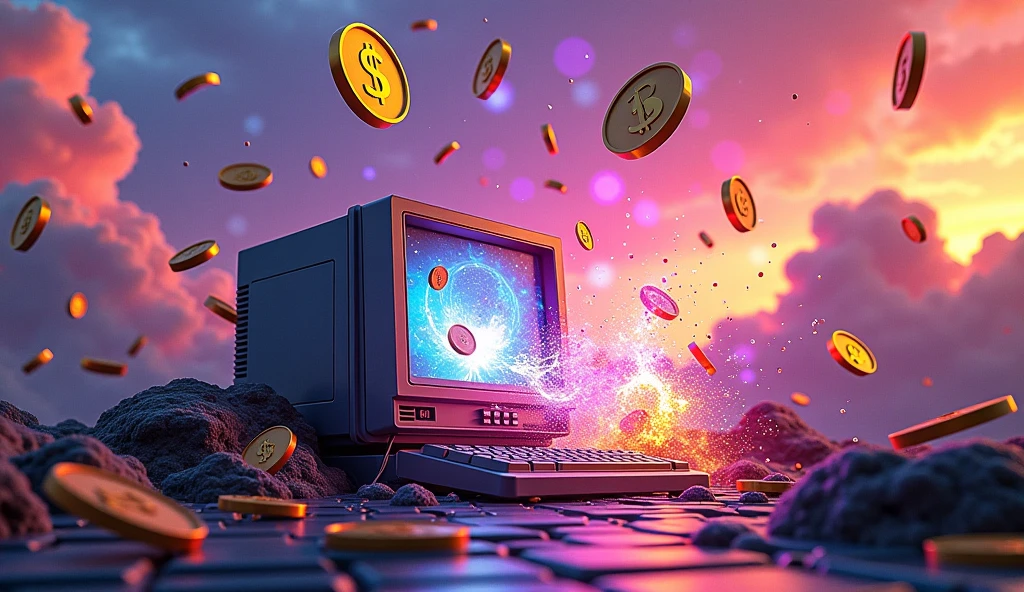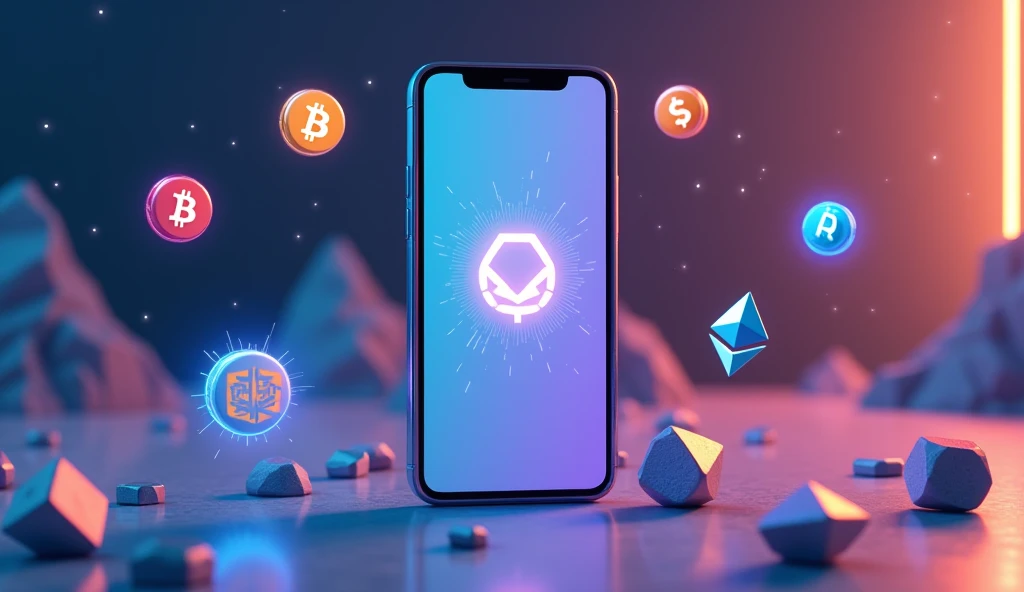Introduction to Non-Fungible Tokens (NFTs)
Non-Fungible Tokens (NFTs) represent a revolutionary approach to digital ownership, fundamentally changing how assets are created, bought, and sold in the digital marketplace. Defined as unique digital assets, they are distinguishable from traditional cryptocurrencies such as Bitcoin or Ethereum. The main characteristic is their non-fungibility; each token has distinct properties that make it different from any other token, allowing them to represent ownership of unique digital items such as art, music, videos, and virtual goods.
The concept of fungibility can be understood through examples: traditional currencies are fungible, meaning one dollar is equivalent to another, and they are interchangeable. In contrast, an NFT is unique and cannot be exchanged on a one-to-one basis with another NFT, as no two NFTs are the same. This intrinsic uniqueness is what grants NFTs their value and collects desirability among buyers and collectors.
The backbone technology that enables NFTs is blockchain, a decentralized, distributed ledger that securely records all transactions. Each one is created from a smart contract, which is a self-executing agreement with the terms written directly into the code. This technology ensures transparency and authenticity, allowing creators to securely establish the provenance of their digital assets.
As the digital economy continues to expand, NFTs have gained considerable traction as a viable form of ownership for digital assets. Their implications stretch beyond mere collectibles, promising potential applications across various sectors, including gaming, entertainment, and real estate. This newfound importance signifies not only a shift in how we perceive ownership but also hints at the evolving landscape of digital properties in the future.

Use Cases and Applications of NFTs
Non-fungible tokens have emerged as a transformative technology across multiple industries, garnering significant attention for their unique ability to establish digital ownership. One of the most prominent applications can be found in the realm of digital art. Artists are leveraging NFTs to tokenize their creations, providing artists with a new avenue for monetization.
By doing so, they can maintain control over their work, receive royalties from secondary sales, and build a direct connection with their audience. As the tip of the iceberg, projects like Beeple’s digital artworks raising millions at auction exemplify this trend.
The gaming industry has also embraced NFTs, utilizing them to represent in-game assets such as skins, weapons, or even virtual land. Players can buy, sell, or trade these assets on various platforms, thus creating a new economy that enhances user engagement and retention. Notably, the ability to own and trade unique digital assets can increase player investment in the game, leading to a more immersive experience. Furthermore, blockchain technology, which underpins NFTs, ensures transparency and verifies ownership, resolving issues related to counterfeit assets.
In the music industry, NFTs allow musicians to release exclusive content, from album art to behind-the-scenes footage, directly to fans. By offering fans a stake in their art, artists can cultivate loyalty and generate additional revenue streams. Similarly, event ticket sales have undergone a transformation as they can serve as verified digital tickets, reducing fraud and providing an immutable record of ownership.
Collectibles, both physical and digital, are being redefined through NFTs, providing collectors with robust proof of authenticity and ownership. Additionally, there is potential for use in identity verification, establishing a secure and verifiable identity in the digital world. The diverse applications of NFTs represent a technological advancement that is reshaping various industries, making them more interactive and equitable.
The Market Dynamics of NFTs: Buying, Selling, and Valuation
The non-fungible token (NFT) marketplace has experienced tremendous growth, fundamentally altering how digital assets are bought and sold. Various platforms facilitate these transactions, offering users opportunities to trade or auction their unique tokens.
Popular marketplaces such as OpenSea, Rarible, and Foundation have emerged as prominent players, each catering to different niches within the NFT community. Users can engage in auctions, fixed-price listings, or even create custom sales, allowing for a flexible trading experience. This diversity supports the ecosystem’s vibrancy and allows creators and collectors to explore various avenues for acquisition.
Their valuation in the market is particularly intriguing, as it is influenced by factors such as rarity, utility, and provenance. Rarity refers to the uniqueness or scarcity of a digital asset, which can drive demand and subsequently its value. Provenance plays a critical role, as an NFT’s ownership history and authenticity can significantly impact its desirability. Buyers often seek verified information about an NFT’s past, including previous ownership, to verify its legitimacy and market value.
Market trends highlight the fluctuating nature of NFT values, with high-profile sales capturing public attention and driving speculative interest. Notable auctions, such as those featuring Beeple’s digital artwork, have not only pushed boundaries regarding valuation but also prompted a broader discussion about the worth of digital ownership. Speculation and hype often steer prices, leading to rapid fluctuations that can leave both buyers and sellers navigating a complex landscape. As the market matures, understanding the underlying dynamics of buying, selling, and valuing NFTs will become increasingly essential for participants at all levels.

Challenges and Future of NFTs
The emergence of non-fungible tokens has not been without its challenges and controversies. At the center of the discussions are environmental concerns, particularly the carbon footprint associated with blockchain technology. Most NFTs, especially those based on the Ethereum blockchain, rely on energy-intensive proof-of-work consensus mechanisms. As awareness of climate change grows, the sustainability of these technologies has come under scrutiny, leading to calls for alternative solutions that minimize environmental impact, such as transitioning to proof-of-stake systems.
Another significant challenge facing NFTs is the issues of copyright and intellectual property rights. The decentralized nature of blockchain can create complexities regarding ownership and the ability to enforce copyright protections. Artists and creators have raised concerns about unauthorized duplication and the potential exploitation of their work within NFT marketplaces. As the NFT ecosystem continues to grow, establishing clear legal frameworks to address these copyright dilemmas will be crucial in fostering trust and security among creators and collectors alike.
Market volatility is another factor contributing to skepticism surrounding NFTs. The rapid fluctuations in pricing, both upward and downward, can lead to a perception of NFTs as speculative assets rather than genuine investments. This volatility raises questions about the long-term value and stability of digital collectibles, leading potential investors to exercise caution when entering the market.
Looking ahead, the future trajectory of NFTs remains uncertain but promising. As technological advancements emerge, there is potential for them to redefine ownership concepts across a range of industries, including gaming, entertainment, and real estate. Potential regulatory frameworks may also emerge to address existing challenges, creating a more stable environment for transactions. By navigating the complexities and embracing technological innovations, NFTs can solidify their position as a transformative force in the digital landscape.
Conclusion
Non-Fungible Tokens (NFTs) have emerged as a groundbreaking innovation, redefining digital ownership and transforming industries such as art, gaming, music, and real estate. By leveraging blockchain technology, NFTs provide transparency, authenticity, and new economic opportunities for creators and collectors alike.
Despite challenges such as environmental concerns, copyright issues, and market volatility, the continuous evolution of blockchain and regulatory frameworks offers hope for a more sustainable and structured NFT ecosystem. As technology advances and adoption grows, NFTs are poised to play a crucial role in shaping the future of digital assets, ownership, and the broader digital economy.
FAQ: Non-Fungible Tokens (NFTs)
What is an NFT?
An NFT (Non-Fungible Token) is a unique digital asset that represents ownership of items such as art, music, videos, virtual goods, and more, recorded on a blockchain.
How do NFTs differ from cryptocurrencies like Bitcoin?
Unlike cryptocurrencies, which are fungible (each unit is identical and interchangeable), NFTs are unique and cannot be exchanged on a one-to-one basis. Each NFT has distinct properties and value.
What are NFTs used for?
They are used across a variety of industries, including digital art, gaming, music, real estate, and collectibles. They enable digital ownership, secure transactions, and direct monetization for creators.
How do I buy or sell an NFT?
NFTs can be bought or sold on specialized marketplaces like OpenSea, Rarible, and Foundation. Transactions typically require a cryptocurrency, such as Ethereum, and a digital wallet.
What gives an NFT its value?
NFT value is influenced by factors such as rarity, ownership history (provenance), utility, and demand within the market. High-profile sales and trends also impact pricing.
Are NFTs environmentally harmful?
Some NFTs, especially those on energy-intensive blockchains, have raised environmental concerns due to their carbon footprint. However, more eco-friendly blockchain solutions, like proof-of-stake (PoS) networks, are emerging.
Can NFTs be copied or stolen?
While the digital file linked to an NFT can be copied, the blockchain permanently records ownership, proving authenticity. However, issues with copyright infringement remain a challenge in the NFT space.
Are NFTs a good investment?
These are highly speculative assets, with prices fluctuating based on trends and demand. Some do appreciate, but there is also risk involved, so buyers should do their research before investing.
Do I need technical knowledge to create an NFT?
No, various platforms allow creators to easily mint (create) NFTs without technical expertise. Marketplaces like OpenSea and Rarible provide user-friendly tools for uploading and selling digital assets.
What is the future of NFTs?
They are expected to expand beyond art and collectibles into sectors such as real estate, identity verification, and ticketing. As regulations evolve and technology advances, NFTs could become an integral part of the digital economy.
More about Non-Fungible Tokens (NFTs)



